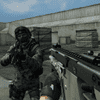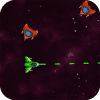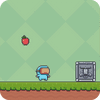Aliens: Dark Descent -up battle than bug hunt
In Aliens: Dark Descent, the absolute worst part isn’t an alien at all, but rather the chronology in the top-right corner of the screen, which I refer to as Satan’s Fast Forward Button. The developers of Battlefleet Gothic: Armada, Tindalos Interactive, have adapted their top-down strategy game to feature up to four Colonial Marines navigating corridors, burning wreckage, and sealed rooms in pursuit of “trigger the generator” objectives while fending off or, ideally, avoiding xenomorphs of varying sizes and canonicalities.
Your team, armed with battle rifles, Smart Guns, flame throwers, grenade launchers, and, of course, shotguns for close encounters, can easily kill a single vanilla Alien so long as certain basic gambits, such as backpedalling while shooting xenos to avoid their acid blood, are mastered. Notifying even a single Alien alerts the rest of the colony, setting off a Hunt phase in which additional Aliens home in on your location and setting the preceding chronology in motion.
Time travel makes the aliens in each setting more numerous and hostile over time. Dots on the map travel considerably more swiftly, switch directions more frequently, and make more vindictive use of the ground, disappearing down tunnels to reappear behind you or hiding in vents next to places that conceal objectives. Timeline events also gradually introduce more powerful alien races, such as the crushing Crusher and the oddly team-spirited Praetorian, which sprints around rousing the other animals like a D&D hero trying to Gather Their Party.
As the Hunt progresses, these points of escalation appear as coloured sectors and icons, slowly making their way towards the centre of the bar. You should keep an eye out for exclamation marks in particular. These initiate an Onslaught, giving you 20 seconds to prepare before spawning a large mob at the back of the map. You won’t always have the luxury of four walls and a clear direction of attack (not that those walls helped Hicks and co. in the end) during a siege, as depicted in the film. I’ve triggered as many Onslaughts while exploring open areas with multiple avenues of approach, like a factory floor or, gulp, the hive’s depths, as I have while exploring a tidy medbay with a single door I can bond shut and furnishings to shudder behind.
Discover a surface area to set your back to, place defences such as turrets and mines to protect all angles, and build arcs of suppression fire — Dark Descent’s equivalent of overwatch — to halt the rush and bog down the Aliens in the killzone. Having a small, slowly replenishing pool of Command Points to use for special abilities means that things rarely go as planned. You won’t be able to take out a firewall system with an incinerator or pick off a Praetorian with a sniper rifle if you pile on the suppression orders.
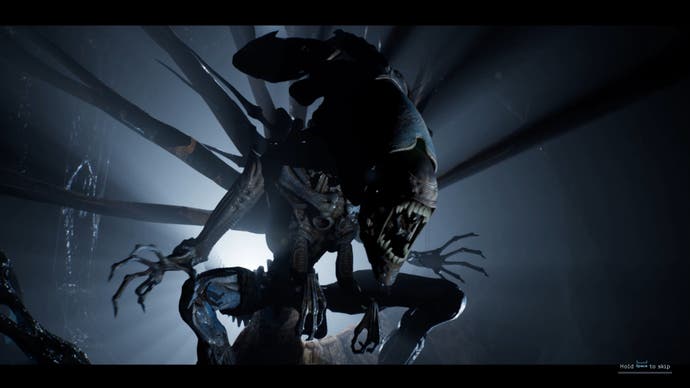
Retribution is your ultimate weapon, an overdrive metre that is filled by receiving damage and then used to repair and inspire your troops while instantly recharging command points. With a clear understanding of what needs to be done first – calling in a dropship barrage to take out the Facehuggers massing behind, or using your extra offer points to stop a Drone from kidnapping your Medic? – the situation can be handled effectively. Like Ripley stealing the APC, it will help you get out of a jam. However, the safest way to win is to avoid using Retribution in the first place by evading detection by slipping between radar dots and hiding behind doors and cover. Eventually, you’ll have to deal with the crowd because it’s necessary for the plot (the game will politely display a “are you ready to die?” prompt whenever you horn in something particularly plot-sensitive). The trick is to avoid paying any more than necessary in penalties.
Phew! I have dove headfirst into its roiling centre. Let’s lend a hand to buffer the acid. Dark Descent, as the above aptly demonstrates, is a great example of how to translate the core beats and significant rhythms of a beloved action movie into repetitive video game systems without compromising their beauty. Lethe, a freshly invaded nest world, looks a lot like LV-426 in the movie, and later locations recall the Nostromo spacecraft and the prison planet in Alien 3.
As Maeko Hayes, a corpo bureaucrat, and Jonas Harper, a marine sergeant born on the planet, you are tasked with organising the systems of the Otago, a crashed cruiser. The Otago is essentially an Aliens take on the base in XCOM, complete with animated tabs for repairing and levelling up systems, investigating or purchasing devices, and outfitting teams for exploration. Your primary mission is to escape the quarantined planet of Lethe, but you’ll also learn about the sexy histories of the two main characters and delve into the mystery behind the xenomorph’s evolution.
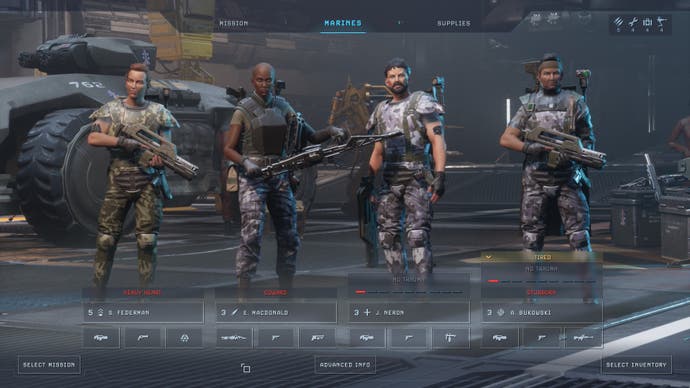
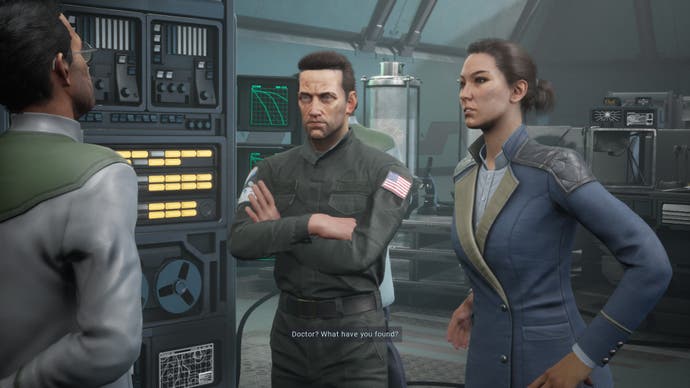
It takes a day to implement maritime explorations, and every several days the global general invasion level increases, making the maps more risky. As a result, there is a greater sense of urgency to complete the tasks on each map and move the plot forward before the temperature rises. When your entire team is wiped off, unlike in XCOM, you’ll be asked to restock a conserve. If you’re having a bad game, you might be forced to limp back to your APC and squander a day.
There’s something a little meh about the approach part. While “XCOM + licence” has been done to death, Aliens: Dark Descent lacks the memorable gameplay and graphical embellishments of similar projects like Warhammer 40,000: Daemonhunters: Chaos Gate. It’s just as unnecessary and functional as the Otago’s own grey, blocky buildings. As far as I can tell, this is on purpose; the project seems to have been designed to be completed with minimal effort and maximum concentration on the tale. At the very least on the most fundamental level, XCOM makes it harder to corner yourself. At one point, the Otago came under attack while all my soldiers were laid out in the infirmary, but as fate would have it, 4 lost marines crawled out of the wasteland to conserve the day. This is just one example of how the game “cheats” to prevent no-win situations.
The activity on the ground picks up the slack if the method feels mundane, not least because it understands the consequential effect of shifting control away from the player. Here’s something I should have mentioned before I started babbling about timelines: you don’t shoot by yourself or manoeuvre individual systems. Instead, you help your team as a whole by setting waypoints and selecting actions from a hotbar, and the game will decide which system will carry them out.
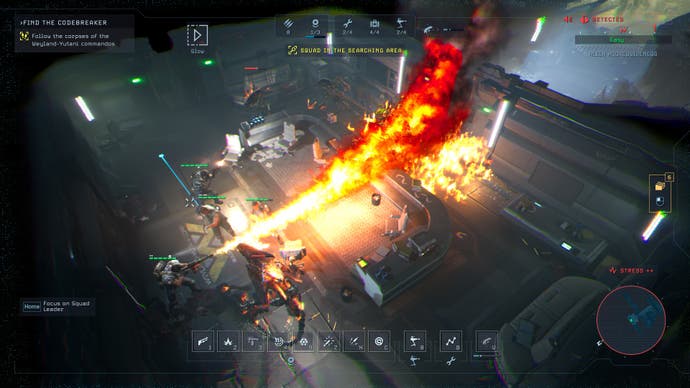
The game’s artificial intelligence (AI) does a good job of arranging the soldiers, letting you react quickly to hazards without needing to micromanage, but you’ll be making heavy use of the slow-motion menu option, as the Aliens are often faster than the bullets you fire at them. The whole-squad approach is realistically awkward, which is part of its quiet brilliance.
The number one rule of scary films is “stay together at all costs.” In Dark Descent, you can build your squad by assigning different systems to perform different tasks, such as having one system drop mines near a door and another collect a datapad. If an alien were to appear during this time, you would be at a huge disadvantage because you couldn’t possibly reroute all of the systems to avoid the threat. This fuzziness in tactics can also have an effect on stealth, as it becomes more likely that the tracking edge of your development will attract the attention of a xenomorph if your group is spread out, perhaps because one marine is carrying an injured comrade and is unable to run.
Add the tension and climaxes fostered by the timeline/aggression mechanics and you have one of the finest Aliens variations and, if the field isn’t already too crowded, the best Aliens-inspired strategy video game. Dark Descent is let down by a few issues, though. One advantage is that it gives you more options for talking to your marines. After playing for 20 hours, the phrase “begun team!” has probably become an irretrievable part of my internal soundscape. Though the fight style is a perfected replay of the movie’s terrible orchestral scoring, it is repeated so many times that I found myself wishing for a more varied score.
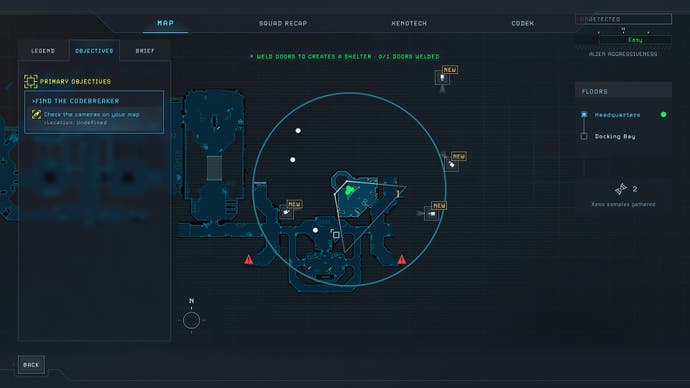
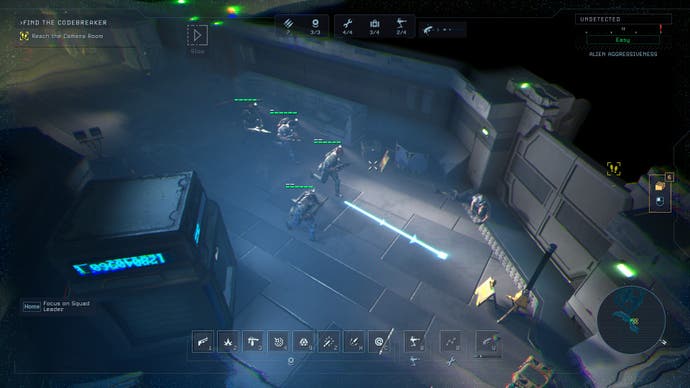
A more serious problem is the cartoonish portrayal of your troops’ mentality in the game, which aims to systematise the team dynamic seen in the film but comes off as unfinished. You’ll need to take your marines to therapy between missions like in Darkest Dungeon because their stress and the development of traits like Bully will reduce both their and the team’s effectiveness in battle. After seeing the previews, I was expecting a daytime drama in the vein of Hudson or Vasquez, with people going insane upon discovering egg chambers or losing their nerve and refusing to move.
In practise, everything is handled in an abstract, role-playing game fashion, with the focus being on menus rather than characters. Some variations on the character state reduce accuracy, while others slow the regeneration of command points. Managing these setbacks presents a challenge, but there are things you can do, including seal off areas to prevent further damage and give your team time to regroup. It fell short of my expectations. Inquiring minds want to know if Tindalos considers any other noteworthy “peace of mind impacts” except the one they ultimately settle on.
But the saddest part (spoilers ahead) is that Dark Descent has a tiny bit of a Third Faction problem. The project is just getting into its stride when, like a warm-up band, the Aliens are quickly blended to one side and a cult of human xeno-worshippers are presented in spectacular style. These people are the evolved descendants of stubborn colonists who set up shop in the wastes. From Fallout to Mad Max, I’ve faced a lot of cults in video games, yet Dark Descent’s contribution doesn’t even make the top 100. Some charge at you with hammers and shovels, while others take cover and fire at you like it’s 2003. Brother, have you tried the video game Kill Switch?
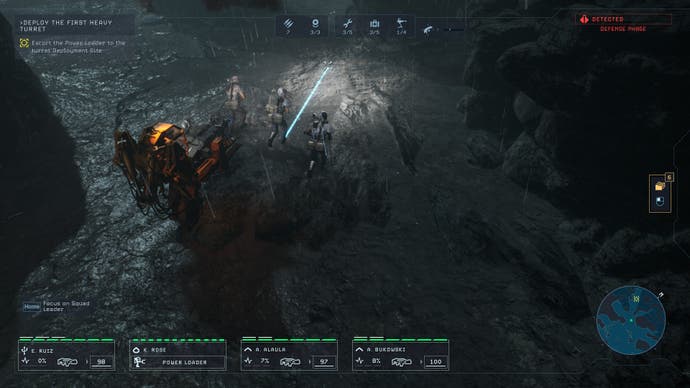
An intriguingly macabre aspect of the human antagonists is that they reveal that one of the basic functions of the Colonial Marines in the Aliens universe, before to the xenomorph outbreak, was to crush boisterous employees on behalf of Weyland-Yutani. They are enforcers first and foremost, working hand in glove with one of science fiction’s most infamously evil corporations. The game’s cutscenes and uncovered files elaborate on this, but not much to justify the repetition of battles against the cult, who, fortunately, do not appear on every area. If Tindalos had spent the extra money on development to make the xenomorphs more powerful, I’d be much happier.
Still, these are pimples you don’t mind when you’re trying to put the hurt on an Alien Queen and watching an exclamation mark creep down the timeline instead. Some critic whose name I have forgotten once explained Hamlet to me as a text made up entirely of quotations. The same can be said of Aliens; the film’s dialogue and scenes, as well as its musical stings and props, are all cherished examples of pop culture, and I can imagine that it would be easy to appear to be merely bolting the pieces together while making changes to the film. True understanding is required to reassemble these parts in a way that is at both authentic and transformative, and while Aliens: Dark Descent isn’t always as stylish or influenced as it might be, it almost always lands on its feet. The cutting edge of creativity? We were damn close.
Near as damn it.









